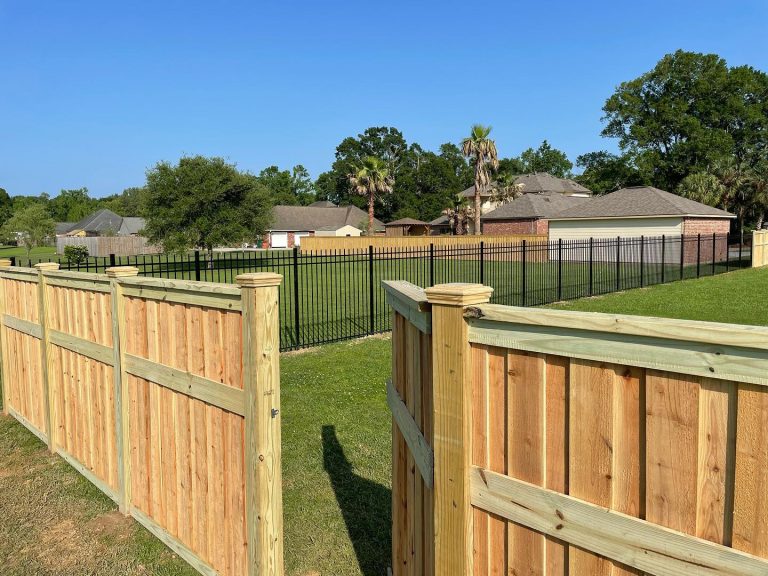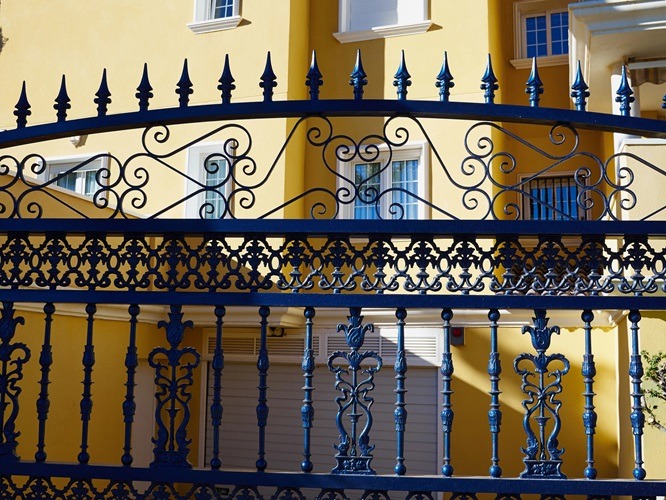
Creating the perfect fence for your property involves thoughtful consideration and expert planning. At State Fencing, we are committed to guiding you through every step of the fence planning process to ensure that the final product meets all your functional needs and aesthetic preferences. Here’s how to get started on planning your ideal fence with us:
1. Understand Your Needs
Before diving into a fencing project, it’s crucial to thoroughly assess what you expect from your new fence. This initial step will guide all subsequent decisions, ensuring that the final product perfectly aligns with your requirements. Here’s how to effectively outline your fencing needs:
Purpose of the Fence: Determine the primary function of your fence. Are you looking to increase privacy, enhance security, keep pets safe, or simply boost curb appeal? The purpose will influence the design, material, and height of the fence. For example, a fence for privacy might need to be taller and without spaces between slats, whereas a decorative fence might focus more on style elements.
Integration with Landscape: Consider how your fence will fit into your existing landscape. Will it complement your garden, frame a beautiful view, or need to be customized to cope with uneven terrain? A fence that flows with the contours of your land and harmonizes with your garden’s theme will enhance the overall aesthetics of your outdoor space.
Long-Term Maintenance: Reflect on the amount of maintenance you are prepared to undertake. Different materials require varying levels of upkeep. Wood might need regular staining or painting, while materials like vinyl or aluminum are low-maintenance. Understanding your readiness to commit time and resources to maintenance can significantly influence your material choice.
Budget Constraints: It’s important to consider how much you are willing to invest in your fencing project. Budget affects not only the choice of materials but also the complexity of the design. Having a clear budget in mind from the start will help in making cost-effective decisions that do not compromise on quality or aesthetics.
By carefully considering these aspects, you can ensure that your fencing project not only meets all your practical needs but also adds value and beauty to your property. This thoughtful approach helps in crafting a fencing solution that stands the test of time and fulfills your expectations, making it a worthwhile investment.
2. Choose the Right Materials
Each fencing material offers different benefits:
- Wood: Wood is a classic and warm aesthetic material that naturally blends with outdoor environments. It’s perfect for creating a traditional or rustic look. However, it requires regular maintenance like painting or staining to prevent decay and damage from insects.
- Vinyl: Vinyl is a Low-maintenance, durable option that resists weathering, rotting, and fading. Vinyl fencing comes in a variety of styles and colors and is ideal for homeowners looking for a clean, modern look.
- Iron: Iron provides a high level of security and a stately appearance. It is especially suitable for ornate designs and can be custom-crafted to match historical or contemporary styles.
- Chain Link: Chain Link is an excellent choice for adding security without obstructing views. While not as visually appealing as other materials, it can be enhanced with slats or vines for added privacy.
- Composite: Composite Fences combine the appearance of wood with the resilience of plastic. Consider factors such as maintenance, longevity, and appearance when selecting your fencing material.

2. Consider the Design
The design of your fence is not just a reflection of your personal style, but it also plays a critical role in the functionality and overall integration with your property’s landscape and architecture. When considering the design of your fence, keep the following elements in mind:
Aesthetic Compatibility: Your fence should complement the architectural style of your home or business. For example, a quaint picket fence might be perfect for a cottage-style home, while a sleek, wrought iron fence could enhance a modern or traditional estate. Consider the visual impact of your fence and how it will blend with or enhance your property’s existing aesthetics.
Functionality: Beyond beauty, your fence must fulfill its intended purpose. Whether it’s providing privacy, ensuring security, containing pets, or creating a safe play area for children, each functional requirement might influence aspects of the design such as the height, the spacing between slats, or the choice of a solid versus more open style.
Color and Finish: The color and finish of your fence can dramatically affect the look and feel of your property. Natural wood stains, vibrant paint colors, or the classic appearance of black iron can offer striking effects. Additionally, finishes can contribute to the longevity and maintenance level of the fence. For instance, powder coatings on metal fences can prevent rust and reduce upkeep.
Custom Accents and Features: Personal touches like post caps, decorative ironwork, or integrated lighting can add character and functionality to your fence. Custom accents not only make your fence unique but can also address specific needs such as enhanced privacy or improved night-time visibility.
Incorporating these elements into the design process helps ensure that your new fence meets all your expectations in terms of both style and utility. Working with a professional team like State Fencing can help translate your vision into a well-planned, beautifully executed fencing solution. Our experts can guide you through choosing the right materials, styles, and custom options to create a fence that is truly yours.
3. Check Local Regulations
Before embarking on your fencing project, it’s essential to understand and comply with local zoning laws and building codes. These regulations can significantly influence various aspects of your fencing plan, including:
- Height Restrictions: Many areas have specific height limits for both front and backyard fences, which can affect your choice if privacy or wind shielding is a priority.
- Material Restrictions: Some localities may restrict certain materials based on the neighborhood’s aesthetic or environmental concerns. For example, certain historic districts might require materials that are in keeping with the historical character of the area.
- Boundary Rules: It’s important to know precisely where your property lines are to avoid disputes with neighbors. In some cases, a survey may be required to confirm these boundaries before installation begins.
- Permit Requirements: Depending on where you live, you may need to obtain a permit before constructing a fence. Failing to comply with permit requirements can result in fines or being required to dismantle the fence.
4. Plan for Gates and Access
Effectively planning for gates and access is a crucial part of designing your fencing system, ensuring both functionality and security. Consider the following aspects:
Gate Placement: Decide where gates will be most practical for your daily use. Common placements include front walkways, side yards, or back entries. Consider how you use your yard and what points require easy access, such as for vehicle entry or garbage disposal.
Type of Gate: Depending on your needs, you might opt for a simple walk-through gate, larger double swing gates for vehicle access, or sliding gates if space is limited. Each type has its advantages in terms of ease of use and space requirements.
Automation and Security Features: Modern gates can be equipped with automation features for convenience and enhanced security. Automated electric gates can be opened with remote controls, keypad entry, or smartphone apps, offering a secure and user-friendly option. Additionally, consider integrating intercom systems or video surveillance to monitor and control who enters and exits your property.

5. Budget Accordingly
Setting a realistic budget for your fencing project is crucial for ensuring that you can achieve your desired outcome without financial strain. Here are some key factors to consider when budgeting for your fence:
Material Costs: Different materials come at varying price points. For example, wood is generally less expensive than iron or composite materials, but it may require more maintenance over time, which could increase long-term costs. Vinyl, while initially more costly than wood, offers savings on maintenance. It’s important to balance upfront costs with long-term value.
Installation Expenses: The complexity of the fence installation can affect your overall costs. Factors like the terrain of your property (e.g. slopes, obstacles like trees or rocks) and the size of the area to be fenced can impact labor and material needs. Custom fence designs or enhancements such as decorative posts, finishes, or additional features like privacy slats or lattice work will also add to the cost.
Permitting Fees: Depending on your location, you may need to pay for permits before construction can begin. The cost of permits varies widely by area but is an important part of your budget to investigate early in the planning process.
Future Maintenance: Consider the future maintenance requirements and costs associated with the type of fence you are installing. Planning for these expenses in your initial budget will help you assess the total cost of ownership of the fence over its expected lifespan.
When planning your budget, it’s a good idea to consult with fencing professionals like State Fencing who can provide detailed estimates and help you understand the full scope of costs involved. This ensures there are no surprises and you can make informed decisions that align with your financial and fencing goals.
6. Consult with Professionals
Finally, consult with our fencing experts at State Fencing. We can provide valuable insights, suggest design ideas you might not have considered, and help navigate any potential challenges. Our goal is to ensure that planning your fence is as seamless and stress-free as possible.
With State Fencing, planning your fence is a collaborative and exciting process. Contact us today to start discussing your project and turn your fencing ideas into reality. Enhance your property’s security, privacy, and curb appeal with a professionally planned and installed fence.
